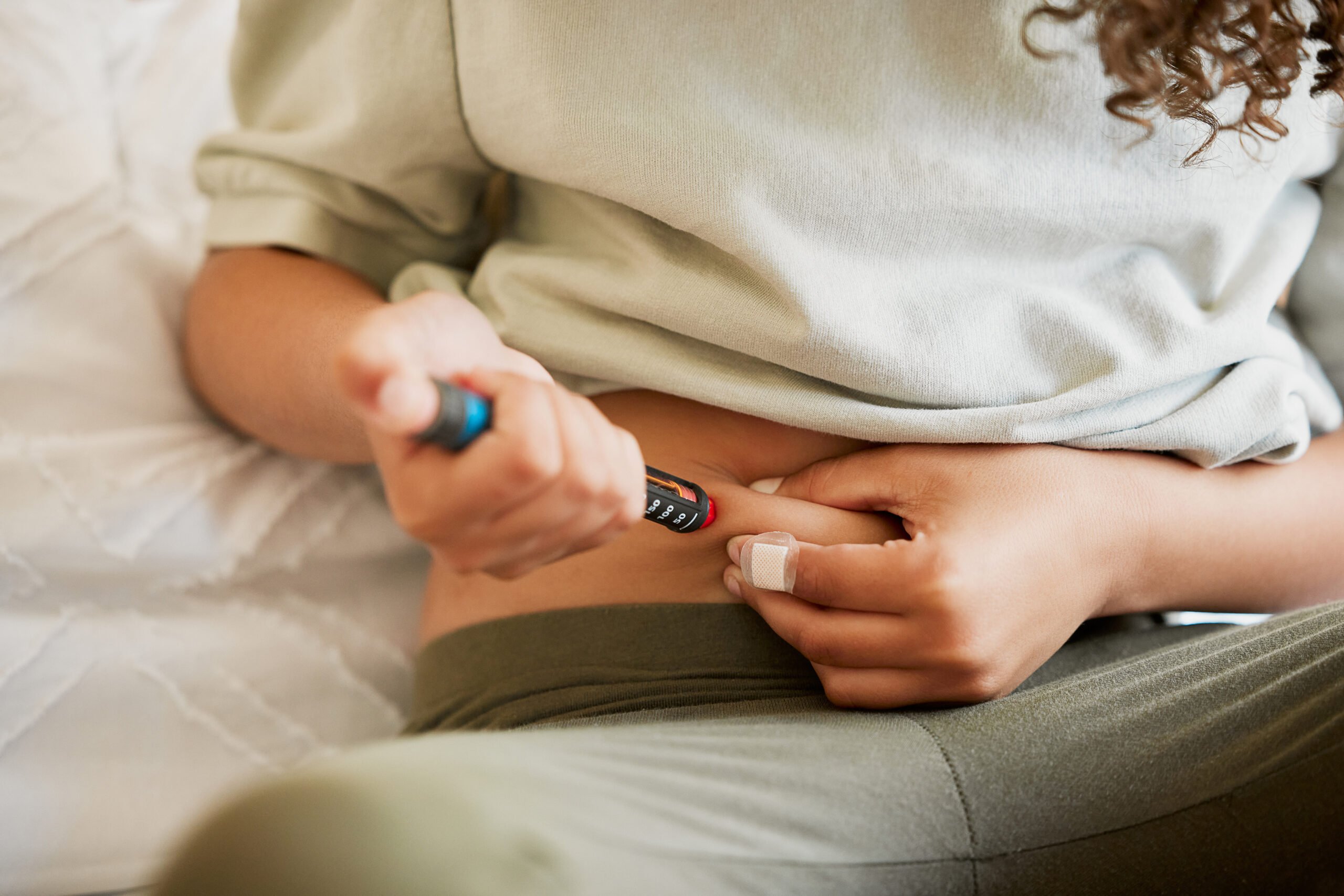Tirzepatide is a promising new treatment for diabetes that has been shown to effectively lower blood glucose levels and promote weight loss. However, it’s important to use Tirzepatide correctly in order to maximize its benefits and minimize potential side effects. In this article, we’ll provide a step-by-step guide on how to use Tirzepatide for diabetes management, including dosing instructions, injection tips, and safety guidelines.
Tirzepatide Dosing Instructions
Tirzepatide is available as a subcutaneous injection and should be administered once a week. The starting dose of Tirzepatide is 5 mg, which can be increased to 10 mg after 4 weeks if needed. After an additional 4 weeks, the dose can be increased to the maximum dose of 15 mg.
It’s important to follow your healthcare provider’s instructions for Tirzepatide dosing and to never change your dose without consulting with them first. Your healthcare provider will determine the appropriate dose based on your individual needs and medical history.
Tirzepatide Injection Guide
Before administering Tirzepatide, it’s important to wash your hands with soap and water and to clean the injection site with an alcohol wipe. Tirzepatide should be injected subcutaneously (under the skin) in the abdomen, thigh, or upper arm.
To inject Tirzepatide, follow these steps:
- Remove the prefilled pen from the refrigerator and let it sit at room temperature for 30 minutes.
- Check the liquid in the pen. It should be clear and colorless. Do not use the pen if the liquid is cloudy, discolored, or has particles in it.
- Attach a new needle to the pen and remove the outer cap.
- Prime the pen by dialing 2 units and then injecting into the air.
- Choose an injection site and clean the skin with an alcohol wipe.
- Pinch the skin and insert the needle at a 90-degree angle.
- Inject the dose and remove the needle.
- Dispose of the needle and pen in a sharps container.
It’s important to rotate injection sites to avoid injection site reactions, such as redness, itching, or swelling. Be sure to dispose of needles and pens safely and according to local regulations.
Tirzepatide Side Effects and Management
Like all medications, Tirzepatide can cause side effects. The most common side effects of Tirzepatide are gastrointestinal-related, such as nausea, vomiting, and diarrhea. These side effects typically resolve on their own within a few days or weeks.
Other potential side effects of Tirzepatide include:
- Hypoglycemia (low blood sugar)
- Injection site reactions
- Pancreatitis (inflammation of the pancreas)
- Thyroid C-cell tumors
If you experience any of these side effects, it’s important to contact your healthcare provider. They may adjust your Tirzepatide dose or recommend additional treatment to manage your symptoms.
Tirzepatide for Weight Loss in Diabetes
In addition to lowering blood glucose levels, Tirzepatide has also been shown to promote weight loss in people with diabetes. In clinical trials, people who took Tirzepatide lost an average of 12-15% of their body weight over a period of 52 weeks.
Tirzepatide injection is designed for subcutaneous use in people with type 2 diabetes. It is an injectable medication that helps lower blood sugar levels by activating the GLP-1 receptor and GIP receptor. Tirzepatide works by increasing insulin secretion and inhibiting glucagon release, which leads to a reduction in blood glucose levels. In addition to its blood sugar-lowering effects, Tirzepatide also helps with weight loss.
If you have been prescribed Tirzepatide, it is essential to follow the dosing instructions carefully. In this article, we will guide you through the steps of using Tirzepatide safely and effectively.
How to Administer Tirzepatide Safely and Effectively: Dosage and Injection Tips
Step 1: Check your Tirzepatide prescription
Before starting Tirzepatide treatment, you should read the prescribing information and understand the dosage and administration instructions. Make sure to follow your healthcare provider’s recommendations and stick to the prescribed dose.
Step 2: Prepare for Tirzepatide Injection
Tirzepatide comes in a prefilled pen, and you need to prepare it before injecting it. First, take the pen out of the refrigerator and allow it to reach room temperature for about 30 minutes. After that, inspect the pen for any visible particles or discoloration. If you notice any issues, do not use the pen, and contact your healthcare provider for a replacement.
Step 3: Choose an injection site
Tirzepatide should be injected subcutaneously in the abdomen, thigh, or upper arm. Before injection, clean the injection site with an alcohol swab and let it dry. It is recommended to rotate the injection site to avoid skin irritation or lipodystrophy.
Step 4: Inject Tirzepatide
Hold the pen at a 90-degree angle to the skin and press the pen’s injection button firmly. You should hear a click sound indicating the injection is complete. Keep the pen pressed against the skin for about five seconds to ensure that the full dose has been administered.
Then, release the button and remove the pen from the skin.
Step 5: Dispose of the Tirzepatide Pen
After injecting Tirzepatide, dispose of the pen safely. Do not reuse or share your pen with anyone else. You can dispose of the pen in a sharps container or follow the instructions provided by your healthcare provider for safe disposal.
Dosage and Administration of Tirzepatide
The recommended starting dose of Tirzepatide is 5 mg once a week. After four weeks, your healthcare provider may increase the dose to 10 mg once a week. If needed, the dose can be further increased to 15 mg once a week. It is important to stick to the prescribed dose and not to exceed the recommended dose.
Tirzepatide Usage Guidelines
To get the most out of Tirzepatide treatment, it is essential to follow these usage guidelines:
- Use Tirzepatide as prescribed by your healthcare provider.
- Store the pen in the refrigerator and let it reach room temperature before injecting.
- Inspect the pen before use and do not use it if there are any visible particles or discoloration.
- Inject Tirzepatide subcutaneously in the abdomen, thigh, or upper arm.
- Rotate the injection site to avoid skin irritation or lipodystrophy.
- Dispose of the pen safely after use.
In conclusion, Tirzepatide is a promising new medication for managing type 2 diabetes and aiding in weight loss. However, as with any medication, it is important to use it safely and effectively. By following the dosing and administration instructions, as well as managing any potential side effects, patients can reap the benefits of Tirzepatide while minimizing any risks.
If you are considering using Tirzepatide or have already started taking it, make sure to consult with your healthcare provider and pharmacist for personalized guidance and advice. With the right guidance and support, Tirzepatide can be a valuable tool in your diabetes management and weight loss journey.
We hope that this article has provided you with useful information and insights on how to use Tirzepatide. For more information on diabetes management, medication use, and other related topics, please feel free to check out our other articles.
References:
Tirzepatide: a new option for type 2 diabetes management. Pharmacy Today. https://www.pharmacytoday.org/article/S1042-0991(21)00253-1/fulltext. Accessed April 28, 2023.
Tirzepatide. MedlinePlus. https://medlineplus.gov/druginfo/meds/a622068.html. Accessed April 28, 2023.
Take control of your diabetes and weight management with Tirzepatide, the innovative medication that can change your life. Book a consultation with the Alpha Male Clinic today and gain access to our step-by-step guide and dosing instructions for safe and effective use. Our expert team will provide you with tips for managing side effects and administering the injection, as well as inform you of the benefits and risks of Tirzepatide based on clinical trial results. Don’t wait any longer to start your journey towards better health and book your consultation now.
Tirzepatide is a dual-action medication that aids in weight loss and blood sugar control. It works by targeting the glucagon-like peptide-1 (GLP-1) and glucose-dependent insulinotropic polypeptide (GIP) receptors, promoting reduced appetite, improved glycemic management, and weight loss.
Tirzepatide is typically prescribed for adults with type 2 diabetes and weight-related health issues. However, it is essential to consult with a healthcare provider to determine if Tirzepatide is the right treatment option for you.
Tirzepatide is administered as a subcutaneous injection, usually once a week. Your healthcare provider will guide you on the proper injection technique and dosage.
It is crucial to discuss your current medications and medical history with your healthcare provider before starting Tirzepatide. Your provider will determine if Tirzepatide can be safely combined with other diabetes medications based on your specific situation.
The time it takes to see results with Tirzepatide can vary between individuals. Some people may notice weight loss and improved blood sugar control within a few weeks, while others may take a few months to achieve significant results.
Some common side effects of Tirzepatide include nausea, vomiting, diarrhea, and constipation. These side effects are usually mild and subside as your body adjusts to the medication. If you experience severe or persistent side effects, consult your healthcare provider.
The duration of Tirzepatide treatment depends on your individual needs, goals, and response to the medication. Your healthcare provider will monitor your progress and adjust your treatment plan as needed.
Tirzepatide is primarily prescribed for individuals with type 2 diabetes and weight-related health issues. However, it is important to consult your healthcare provider to determine if Tirzepatide is suitable for you, even if you do not have diabetes.
It is possible to regain weight after discontinuing Tirzepatide treatment. To maintain long-term weight loss results, it is essential to adopt a healthy lifestyle, including a balanced diet and regular physical activity. Consult your healthcare provider for guidance on maintaining your weight loss after completing your Tirzepatide treatment.
Insurance coverage for Tirzepatide varies depending on your provider and specific plan. It is essential to check with your insurance company to determine your coverage and any out-of-pocket expenses you may incur.



